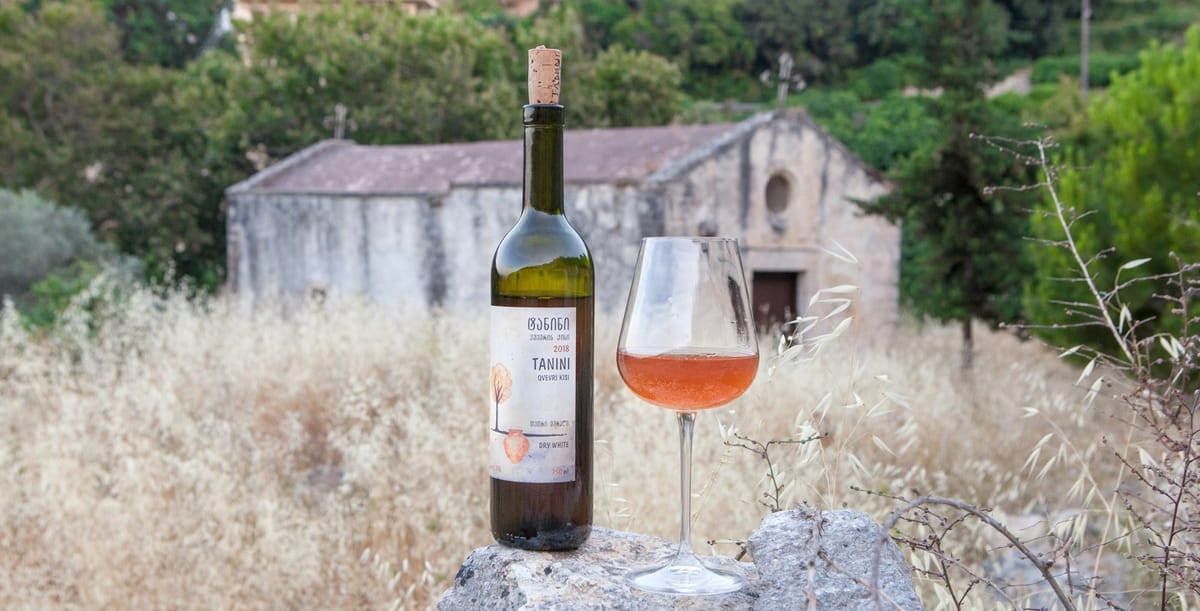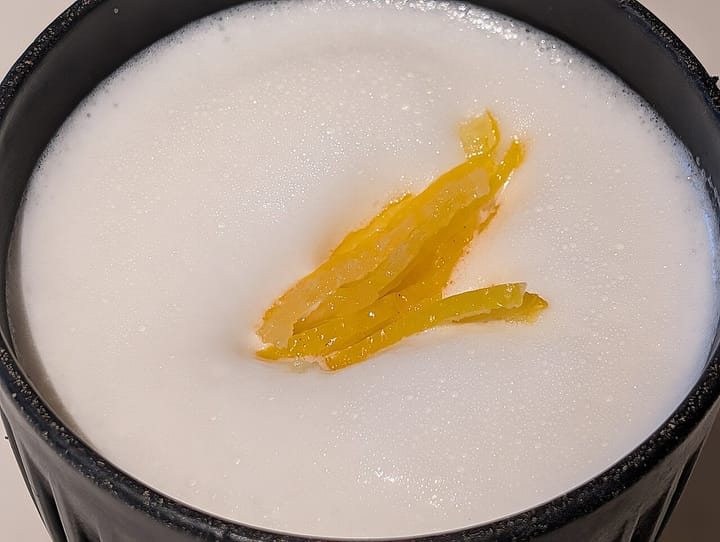Understanding Natural Wine: What You Need to Know
These days, entering a new restaurant or wine bar usually means seeing natural wines on the menu. Even if not explicitly labeled as "natural," many listed wines fit this category. If you're curious about what natural wine really is, you're not alone.

What is Natural Wine?
Natural wine is characterized by its commitment to minimal intervention, both in the vineyard and during the winemaking process.
Advocates of natural wine avoid the use of synthetic herbicides, pesticides, and fertilizers, favoring sustainable, organic, or biodynamic farming methods.
Small-scale, independent producers often hand-pick grapes, which are then fermented using only the native yeasts present on their skins.
This approach eschews commercial yeasts and other common additives like yeast nutrients, aiming to let the natural flavors of the vineyard shine through.
Additionally, natural wines typically contain little or no added sulfites, further distinguishing them from more conventional wines.
Origins and History of Natural Wine
Natural wine, while rooted in ancient winemaking traditions, gained its modern identity and movement in the 20th century, particularly in the 1980s in France.
The resurgence was spearheaded by small-scale vintners in regions like Beaujolais and the Loire Valley who advocated for a return to the old methods of viticulture and vinification.
These winemakers sought to move away from the industrial practices that had become common and focused instead on making wine with the least possible intervention.
This approach meant using indigenous yeasts for fermentation, eschewing additives, and minimizing the use of sulfites.
The natural wine movement has since spread globally, influencing producers and consumers who prioritize environmental sustainability and authenticity in winemaking.
Natural Wine Tasting Notes
Natural wines are celebrated for their distinct, unfiltered qualities, often described as funky, gamy, and yeasty, with a cloudy appearance and sediment due to minimal intervention and lack of filtration.
These wines typically showcase vivid, earthy flavors that reflect their terroir, characterized by pronounced mineral and herbal notes.
Fermented with indigenous yeasts, they exhibit a rustic, barnyard aroma profile that may remind one of yogurt, though some can be surprisingly clean and fruity.
However, most natural wines tend to lean towards a sour, yeasty spectrum, displaying a great deal of variability and unpredictability from one bottle to the next.
Here are three distinctive styles that epitomize the natural wine movement:
- Orange Wine: A unique style of white wine produced using red wine techniques, where the juice remains in contact with the skins and seeds during fermentation. This method, which uses ancient winemaking techniques, is especially popular in Friuli, Italy, and neighboring Slovenia. Orange wines are noted for their robust flavor and are part of a broader approach to making white wines with the same methods traditionally used for reds.
- Pétillant Naturel (Pet Nat): This is a type of semi-sparkling wine produced using the Méthode Ancestrale, the oldest method of making sparkling wine. The wine completes its first fermentation in the bottle, naturally carbonating with a refreshing spritz. This method is in contrast to the traditional champagne method, which involves adding sugar and yeast for a second fermentation. Pétillant Naturel is particularly associated with Chenin Blanc from the Loire Valley.
- Col Fondo Prosecco: Representing a less conventional take on the popular sparkling wine, Col Fondo Prosecco is a cloudy, unfiltered version that offers a funky alternative to the typical Prosecco experience. This style maintains some of the natural yeast sediments, contributing to its distinctive character.
Natural Wine Vs. Conventional Wine
Natural wine is distinct from conventional wine primarily in its philosophy and production methods, which emphasize minimal intervention and a return to traditional, often pre-industrial winemaking techniques. Here are some key differences between natural and conventional wines:
1. Viticulture (Grape Growing)
Natural Wine
- Organic/Biodynamic Practices: Adheres strictly to organic or biodynamic farming, avoiding synthetic chemicals entirely. These practices support a balanced ecosystem and healthy soil, aiming to reflect the true character of the terroir.
- Hand Harvesting: Focuses on hand-picking grapes to ensure optimal selection and to maintain vine health, which is critical in small, quality-focused productions.
- Sustainability: Emphasizes environmental sustainability and the long-term health of the vineyard, often including techniques like cover cropping and natural pest management.
High-Quality Conventional Wine (such as in Burgundy)
- Integrated Pest Management: Uses a more measured approach to chemicals, employing them more strategically rather than broadly. This can include using some synthetic aids but in a controlled manner to maintain vine health without compromising the ecosystem.
- Selective Harvesting: While mechanization might be used, there is often a significant emphasis on selective harvesting to ensure only the best grapes are used, especially in premium wine production.
- Quality Over Quantity: In premium segments like expensive Burgundy wines, the focus is definitely on producing the highest quality grapes rather than maximizing yield. Techniques are employed to optimize the health and output of each vine, which can include green harvesting (removing some grapes to allow others to thrive) and careful canopy management.
2. Winemaking Process
Fermentation
- Natural Wine: Utilizes wild yeasts that are naturally present on the grape skins and in the cellar environment. This approach can result in less predictable and more diverse fermentations, which are thought to better express the unique characteristics of the terroir. Natural wines often feature lower alcohol levels, partly because native yeasts are less efficient at converting sugar to alcohol and partly due to grapes being picked earlier, avoiding over-ripeness.
- Conventional Wine: Employs commercially cultured yeasts, which are selected for their ability to provide consistent and predictable fermentations. This helps winemakers achieve specific flavor profiles and maintain uniformity across vintages. The use of these yeasts can also support higher alcohol content by efficiently fermenting available sugars.
Additives
- Natural Wine: Adheres to a philosophy of minimal intervention, which includes using few if any additives. Sulfites, when used, are kept to a minimum, and other common winemaking additives like acids, tannins, enzymes, and fining agents are generally avoided. This approach is intended to keep the wine as natural and unaltered as possible.
- Conventional Wine: Frequently uses a range of additives to modify everything from the wine's color and taste to its texture and longevity. Sulfites are commonly used at higher levels for their preservative qualities. Other additives might include acids to adjust pH, sugar for boosting alcohol levels (chaptalization), and various fining agents to clarify the wine.
Filtration and Fining
- Natural Wine: Often unfiltered and unfined, which can result in a cloudier appearance and more substantial mouthfeel. This less processed approach is believed to preserve the wine's natural flavor and textural nuances.
- Conventional Wine: Typically undergoes both filtration and fining to remove particulate matter, thus achieving a clearer and more aesthetically pleasing final product. These processes help stabilize the wine, making it less prone to spoilage and more consistent from bottle to bottle.
3. Philosophy and Goals
- Natural Wine: Aims to make wine that is an expression of the place where the grapes are grown (terroir) and the specific conditions of the vintage. The approach is often described as 'letting the wine make itself' with as little human intervention as possible.
- Conventional Wine: Often prioritizes consistency, reliability, and meeting the taste preferences of a broad market. The approach can be more interventionist, using modern technology and chemistry to control and predict the outcome.
4. Production Scale
Natural Wine
- Artisanal Production: Natural wines are typically produced by smaller, artisanal winemakers. These producers often favor quality over quantity, focusing on meticulous vineyard management and minimal intervention techniques that require more manual labor and attention to detail.
- Limited Quantities: Due to the labor-intensive nature of their practices and the higher risk associated with using natural processes (like spontaneous fermentation), natural wine producers often operate on a smaller scale. This smaller scale helps maintain the integrity and unique characteristics of each batch, but it also means production volumes are generally low.
Conventional Wine
- Large-Scale Operations: Many conventional wines are produced by large-scale wineries that can leverage economies of scale. These wineries use advanced technology and standardized processes to produce large quantities of wine efficiently, aiming for consistent quality and flavor profiles that appeal broadly in the market.
- Efficiency and Automation: The use of mechanized farming, controlled fermentation technologies, and other modern winemaking equipment allows these producers to maximize output and reduce costs, enabling them to meet the high demand seen in global markets.
- Controlled Output for Quality Assurance (High End Wine): To maintain a high standard of quality and exclusivity, some producers of premium wines might intentionally limit production. This helps in preserving the wine’s reputation and ensuring that each bottle meets the winery’s exacting standards.
Is Natural Wine Healthier?
The belief that natural wines are inherently healthier due to their lack of additives, sulfites, and minimal processing is widespread, yet the reality is more nuanced.
First, it's important to note that sulfites, often blamed for wine headaches, have not been conclusively linked to this issue, making their absence in natural wines not necessarily a health benefit.
Additionally, natural wines are unfiltered and unfined, which means they retain all original impurities, including microbes and proteins.
This can increase the presence of biogenic amines like tyramine, which is associated with headaches and migraines.
Furthermore, without sulfites, natural wines can be less stable over time, becoming more susceptible to spoilage if not handled correctly during shipping or storage.
However, natural wines typically have a higher acidity, which can naturally inhibit microbial growth and help maintain stability in the absence of sulfites, provided the pH is adequately low.
Natural wines often carry a higher price tag primarily because they are usually crafted by small-scale producers who manually tend their vineyards.
Additionally, they may require decanting to clear any initial off-odors or unusual flavors before serving.


